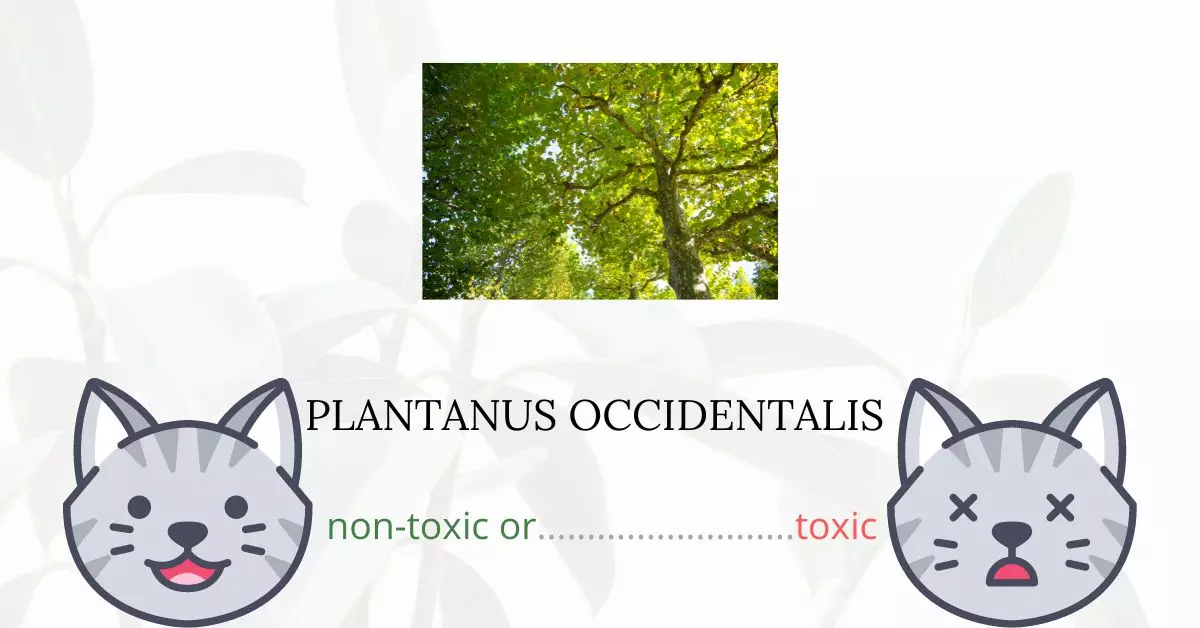No, Platanus Occidentalis or the American Sycamore is not toxic to cats.
To ensure the accuracy and reliability of this information, this article was written in close collaboration with a team of experienced DVMs (doctors of veterinary medicine). Their expert insights and knowledge have contributed immensely in addressing the potential risks associated with Platanus Occidentalis and its effects on feline health. Our findings are also substantiated by research from high-authority sources, including the American Society for the Prevention of Cruelty to Animals (ASPCA) and PetMD, both of which list the American Sycamore as non-toxic to cats.
Thus, cat owners can be assured that growing this tree in their yards poses no threat to their feline companions. Furthermore, it’s worth noting that aside from cats, the tree is also safe for dogs and horses.
Can Cats Eat Platanus Occidentalis or American Sycamore?

Cats may not typically eat a part of Platanus Occidentalis but fallen branches or leaves may pique their interest. It would not hurt your feline companions if they had a bite of any part of this tree. However, consuming huge amounts may cause them to have an upset stomach.
Because cats are obligate carnivores, their bodies are not ready to process plant materials. If they happen to experience indigestion, they may show symptoms of vomiting and diarrhea. The illnesses will subside once the cat’s body has ejected the plant matter.
What is Platanus Occidentalis or American Sycamore?

Platanus occidentalis is also commonly known as American Plane Tree, American Sycamore, Oriental Plane, and Buttonwood. It is a huge deciduous tree with a trunk diameter of 10 feet or more.
Platanus occidentalis is one of the biggest hardwood trees in North America in terms of diameter. Keep in mind while placing this tree in your landscaping that it will be a massive tree for a vast space. It’s native to North Carolina yet it’s more abundant and bigger around creeks and bottom land.
The leaves of the American Sycamore are alternating, with 3 to 5 lobes and a coarsely serrated edge. The bark of the tree is mottled due to the darker outer layers peeling away to reveal the lighter interior layers. The bark peels off in portions, and the whitened inner bark is the plant’s most beautiful feature.
Very tiny blooms develop in clusters in the spring, usually one cluster per stem. The tree bears spherical multiples of seeds on a three to six-inch stem.
Keeping Cats Away From Platanus Occidentalis or American Sycamore

While it is less likely that your cat will come near a Platanus Occidentalis or American Sycamore, it is still best to know some precautionary measures.
Your kitties may be damaging your plants out of boredom. Try providing them with engaging cat toys. Keep them occupied indoors so they won’t wander outdoors looking for more intriguing things to do.
Cats loathe the tastes of pepper, cayenne pepper, and bitter apple as well. Spray your chosen spice on the soil and leaves after mixing it in a spray bottle. Your cat will discover after a few attempts that your plants are not edible. However, because each cat is different, you may need to experiment a bit.
Plants to Avoid For Your Cats
If you are a cat owner and unsure if the plants growing in your yard are harmful to your cats, check out this list of toxic plants for cats. You can also check our list of non-toxic plants for cats.





